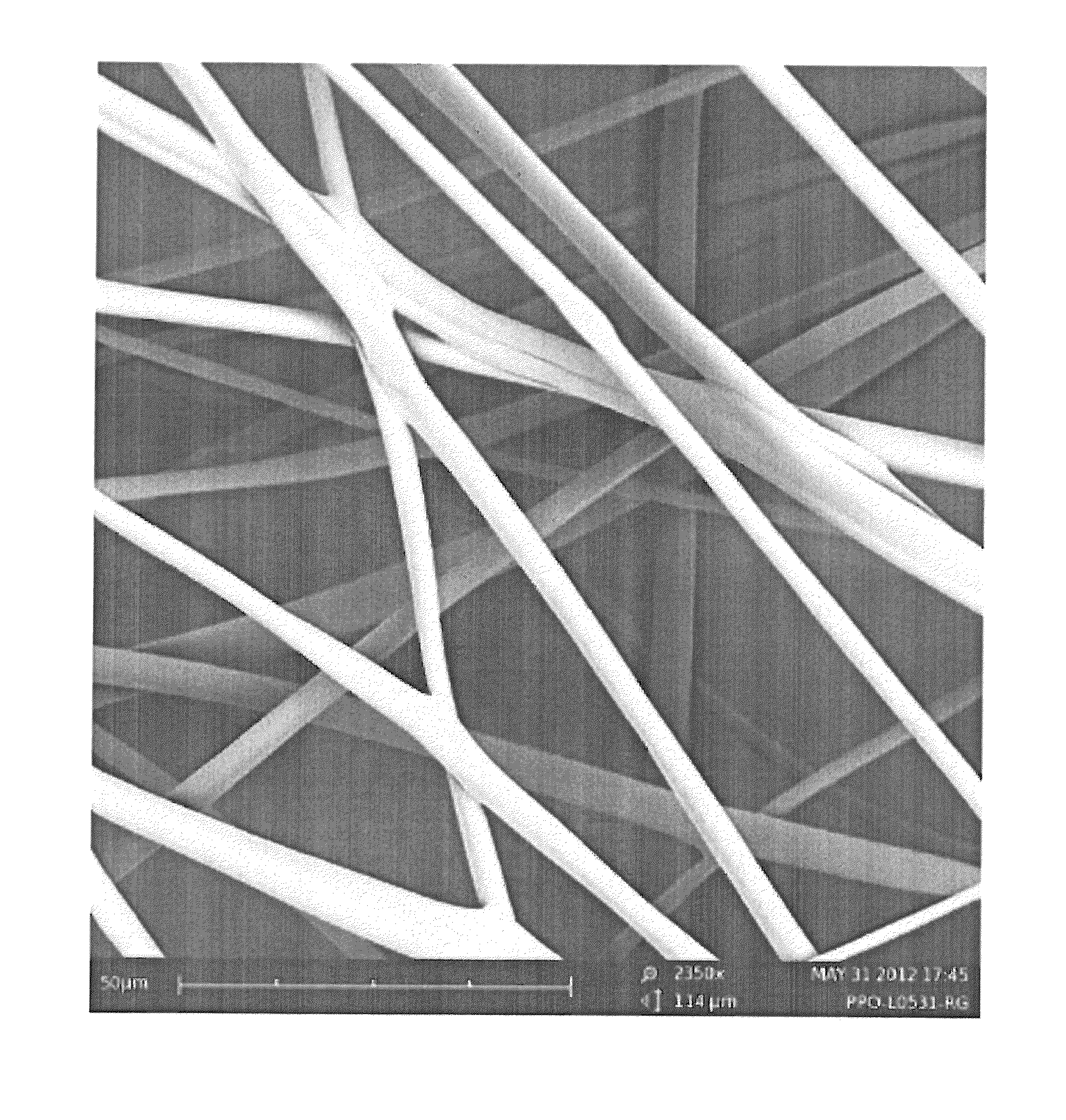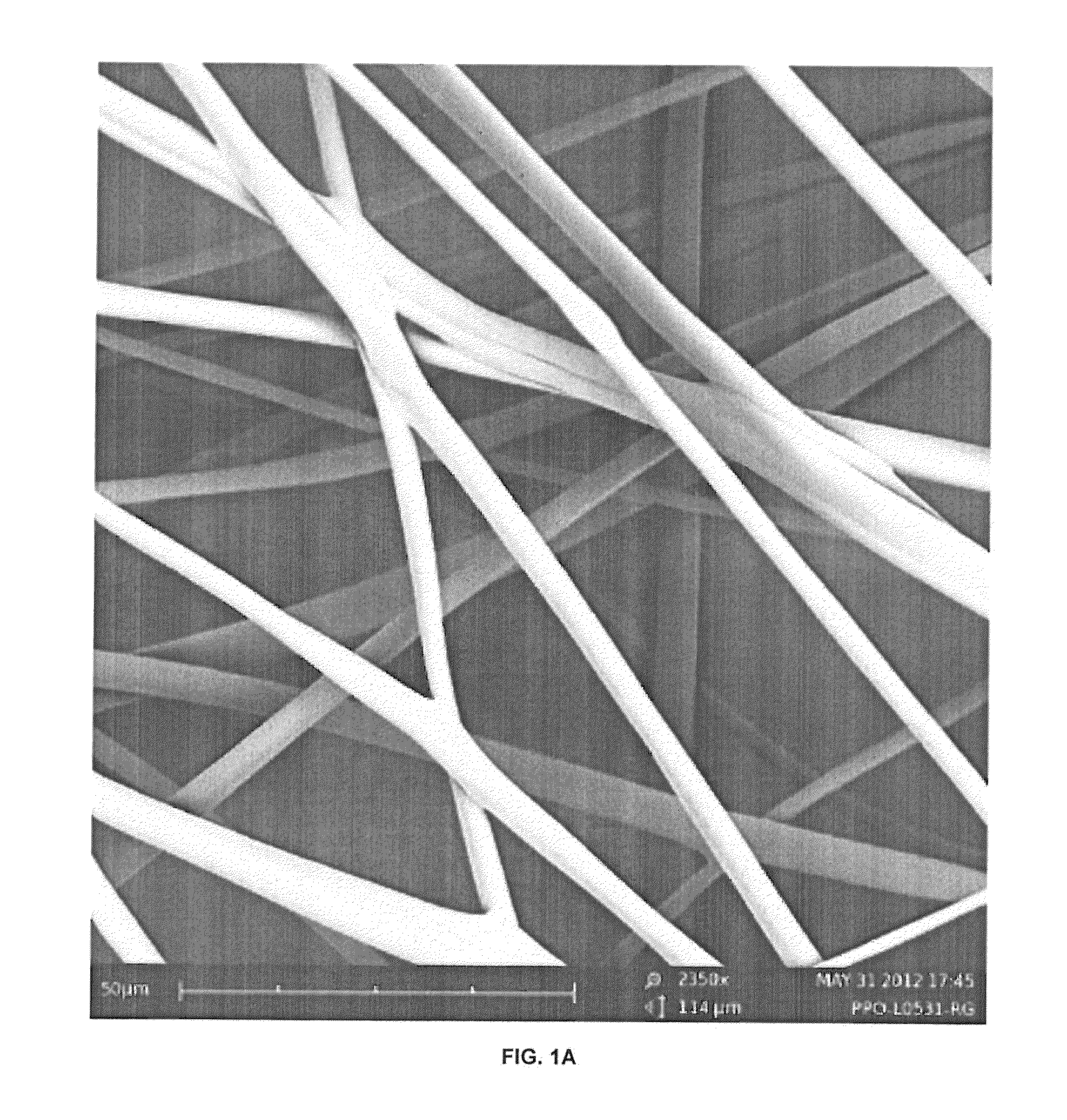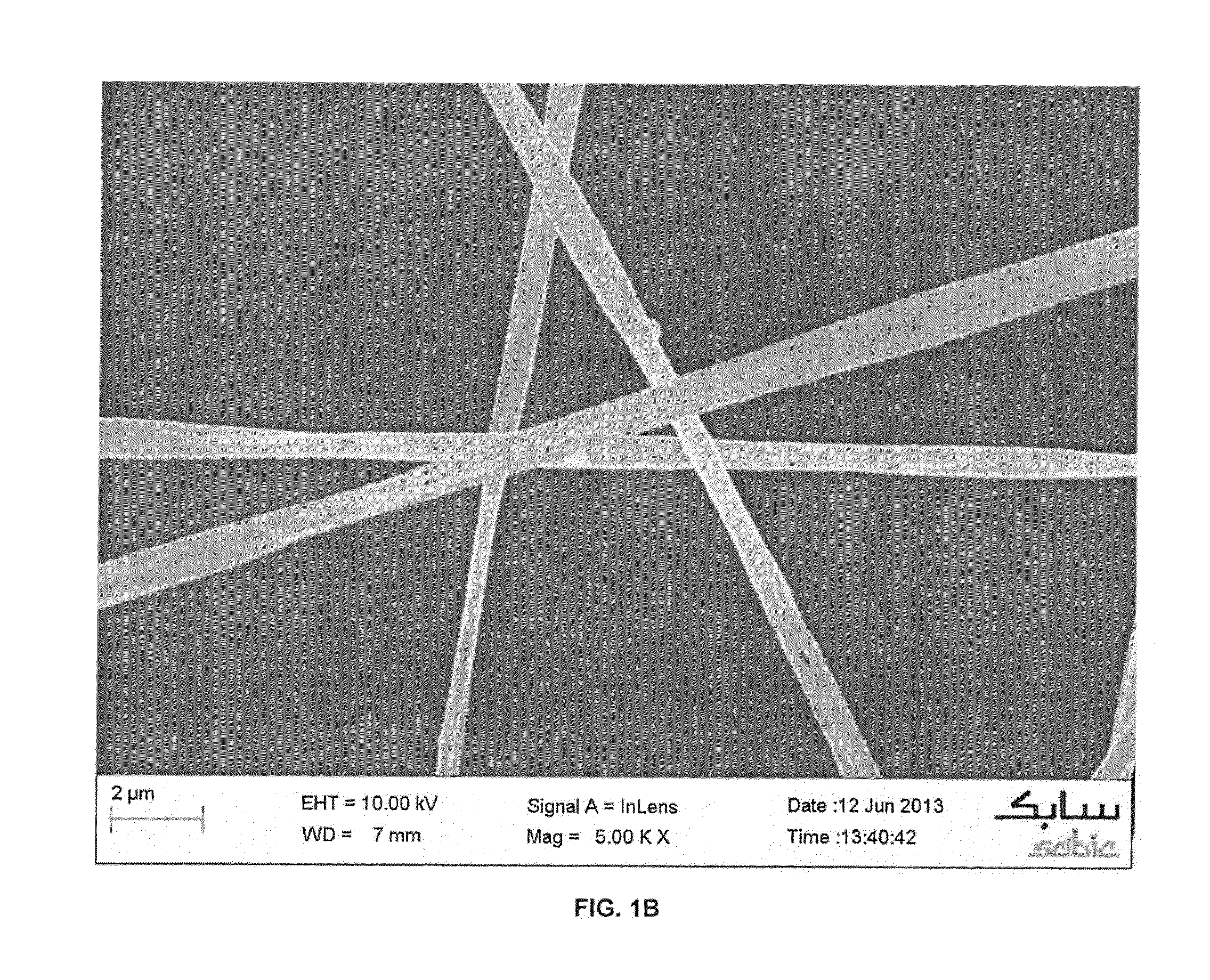Force spun sub-micron fiber and applications
a technology of sub-micron fibers and fibers, applied in weaving, ornamental textile articles, other domestic articles, etc., can solve problems such as commercially unacceptable methods, and achieve the effects of increasing the surface area of resins, reducing fiber diameters, and increasing performance benefits
- Summary
- Abstract
- Description
- Claims
- Application Information
AI Technical Summary
Benefits of technology
Problems solved by technology
Method used
Image
Examples
example 1
[0053]A solution comprising of 8 wt. % PPO6130 dissolved in Toluene, with a solution viscosity of about 100 cP was spun through an orifice diameter of 337 μm (23G) at a spinneret speed of 6,000 RPM. The example resulted in fito 3.9 μm with an average fiber diameter of about 840 nm.
[0054]FIG. 4A is an image showing the fiber morphology obtained according to Example 1. FIG. 4B is a histogram showing fiber diameter measurements obtained according to Example 1.
example 2
[0055]A solution comprising of 8 wt. % PPO6130 dissolved in a mixture of 50% Toluene and 50% Chloroform, with a solution viscosity of about 400 cP was spun through an orifice diameter of 159 μm (30G) at a spinneret speed of 12,000 RPM. The example resulted in fibers with a diameter between 70 nm and 6.2 μm with an average fiber diameter of 1.6 μm.
[0056]FIG. 5A is an image showing the fiber morphology obtained according to Example 2. FIG. 5B is a histogram showing fiber diameter measurements obtained according to Example 2.
example 3
[0057]A solution comprising of 8 wt. % PPO6130 dissolved in Chloroform, with a solution viscosity of about 900 cP was spun through an orifice diameter of 337 μm (23G) at a spinneret speed of 10,000 RPM. The example resulted in fibers with a diameter between 275 nm and 23.4 μm with an average fiber diameter of 7.3 μm. Fig.
[0058]FIG. 6A is an image showing the fiber morphology obtained according to Example 3. FIG. 6B is a histogram showing fiber diameter measurements obtained according to Example 3.
PUM
| Property | Measurement | Unit |
|---|---|---|
| diameter | aaaaa | aaaaa |
| width | aaaaa | aaaaa |
| diameter | aaaaa | aaaaa |
Abstract
Description
Claims
Application Information
 Login to View More
Login to View More - R&D
- Intellectual Property
- Life Sciences
- Materials
- Tech Scout
- Unparalleled Data Quality
- Higher Quality Content
- 60% Fewer Hallucinations
Browse by: Latest US Patents, China's latest patents, Technical Efficacy Thesaurus, Application Domain, Technology Topic, Popular Technical Reports.
© 2025 PatSnap. All rights reserved.Legal|Privacy policy|Modern Slavery Act Transparency Statement|Sitemap|About US| Contact US: help@patsnap.com



